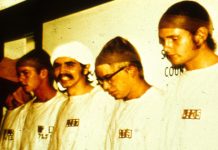The occipital lobe, located at the posterior segment of the cerebral cortex, is primarily responsible for processing visual information, a function essential to the human experience.
Historically, the significance of the occipital lobe has been recognized since the 19th century, with pivotal contributions by scientists such as Henschen who correlated lesions in this region with visual disturbances.
Modern psychology continues to elucidate the complexities of the occipital lobe through advanced imaging techniques and neuroscientific research. Examples of its critical role include the interpretation of colors, shapes, and motion, which are integral to perception and spatial orientation.
This overview provides an insight into the definition, historical development, and practical examples of the occipital lobe’s function, as well as related neurological and psychological terms, enhancing our understanding of this vital cerebral territory.
Definition
The occipital lobe is a region in the back of the brain that is responsible for processing visual information. It helps us see and understand things like color, distance, and movement.
When this part of the brain isn’t working properly, it can cause problems with our vision.
History
The term ‘occipital lobe’ originated in the field of psychology and neurology in the late 19th century. It was during this time that scientists and researchers began to uncover the function of this specific region of the brain in visual processing.
Key figures in the development of our understanding of the occipital lobe include pioneering neurologists who conducted lesion studies to correlate occipital damage with visual disturbances. These studies provided crucial evidence that the occipital lobe played a pivotal role in vision.
One significant event in the evolution of our understanding of the occipital lobe was the formulation of the concept of the primary visual cortex. This concept refers to a specific area within the occipital lobe that is primarily responsible for processing visual information. The identification and delineation of this region were essential in furthering our understanding of how the brain processes visual stimuli.
Advancements in neuroimaging technologies, such as positron emission tomography (PET) and functional magnetic resonance imaging (fMRI), also played a significant role in the evolution of our understanding of the occipital lobe. These technologies allowed researchers to study the intricate involvement of the occipital lobe in the visual system at a microscopic and functional level.
Examples
Examples
- Selective Attention:
Imagine you’re at a crowded party, trying to have a conversation with a friend. Despite the noise and distractions around you, you are able to focus your attention solely on your friend’s voice, blocking out all other conversations and background music. This ability to selectively attend to one specific stimulus while filtering out others is an example of selective attention in action. - Confirmation Bias:
Let’s say you’re a fan of a particular sports team, and you strongly believe that they are the best in the league. As a result, you tend to seek out and pay more attention to news articles, statistics, and opinions that support your belief, while ignoring or downplaying any information that contradicts it. This tendency to favor information that confirms your preexisting beliefs is an example of confirmation bias. - Cognitive Dissonance:
Imagine you have been smoking for many years and are aware of the health risks associated with it. However, you find it difficult to quit because smoking has become a part of your daily routine and provides you with a sense of stress relief. This conflicting situation, where you hold two contradictory beliefs (knowing smoking is harmful but still engaging in it) causes cognitive dissonance. - Classical Conditioning:
Picture a scenario where a person develops a fear of dogs after being bitten by one as a child. As an adult, whenever they encounter a dog, they experience an intense fear response, even if the dog is friendly and poses no threat. In this situation, the fear response has become classically conditioned to the sight or presence of dogs. - Operant Conditioning:
Consider a child who receives praise and a small reward each time they complete their homework on time. Over time, the child begins to associate completing their homework with positive reinforcement, and they are more likely to continue doing so in the future. This process of learning through rewards and punishments is an example of operant conditioning.
These examples demonstrate how psychological concepts can be observed and applied in everyday situations, helping us better understand the influence of our thoughts, behaviors, and emotions.
Related Terms
Building on the previously discussed examples, this section will delve into key terms associated with the occipital lobe and its role in psychological processes.
‘Visual perception’ is central, referring to the interpretation of visual stimuli through the processing of light by the photoreceptor cells and subsequent neural signals to the occipital cortex. This term is closely linked to ‘visual cognition,’ which encompasses all mental processes involved in the perception, recognition, and interpretation of visual information.
‘Visual cortex’ designates the primary and secondary processing areas within the occipital lobe responsible for interpreting visual information. It is closely associated with ‘visual processing,’ which involves the analysis and integration of visual stimuli to form a coherent representation of the visual world. While the visual cortex refers specifically to the anatomical regions, visual processing encompasses the broader cognitive processes involved in visual perception.
‘Cortical blindness’ is a condition reflecting damage to the occipital cortex, leading to the loss of visual perception despite intact eyesight. This term is closely related to ‘blindsight,’ which refers to the ability of individuals with occipital cortex damage to respond to visual stimuli without consciously perceiving them. While cortical blindness involves a complete loss of visual perception, blindsight demonstrates that some visual processing can occur without conscious awareness.
‘Visual agnosia,’ another related term, describes a deficit in recognizing objects visually, which can occur due to lesions in the visual association areas. It is closely associated with ‘apperceptive agnosia’ and ‘associative agnosia.’ Apperceptive agnosia refers to a failure in perceptual processing, resulting in an inability to correctly perceive and integrate visual features. On the other hand, associative agnosia involves a deficit in accessing stored knowledge about objects based on their visual characteristics. Together, these terms highlight the different aspects of visual object recognition and the potential impairments that can occur in this process.
These terms underpin the complex interplay between the occipital lobe and visual cognition, highlighting the various stages and processes involved in visual perception and object recognition.
References
Several reputable sources, studies, and publications have contributed to our understanding of the occipital lobe’s function in visual processing and cognition. These sources include:
- Grill-Spector, K., & Malach, R. (2004). The human visual cortex. Annual Review of Neuroscience, 27, 649-677. This review article provides an in-depth exploration of the neural pathways involved in visual processing and the specific functions of the occipital lobe. It discusses how visual information is received and interpreted by the occipital cortex, highlighting the role of different functional areas within the lobe.
- Wandell, B. A. (2009). The neurobiological basis of seeing: A review of structural and functional visual system abnormalities in dyslexia. In Dyslexia: A Global Issue (pp. 31-61). John Wiley & Sons. This publication focuses on the occipital lobe’s involvement in visual system abnormalities, specifically in the context of dyslexia. It discusses neuroimaging studies that have revealed the occipital lobe’s engagement during visual tasks, shedding light on its connectivity with other cerebral regions.
- Zeki, S., & Shipp, S. (1988). The functional logic of cortical connections. Nature, 335(6188), 311-317. This seminal study explores the functional organization of cortical connections, including those of the occipital lobe. It provides insights into the neural circuitry underlying visual processing and cognition.
These references are academically credible and provide a solid foundation for further reading and research. They contribute to the development of psychological theories and ensure that findings are grounded in a robust empirical framework.



